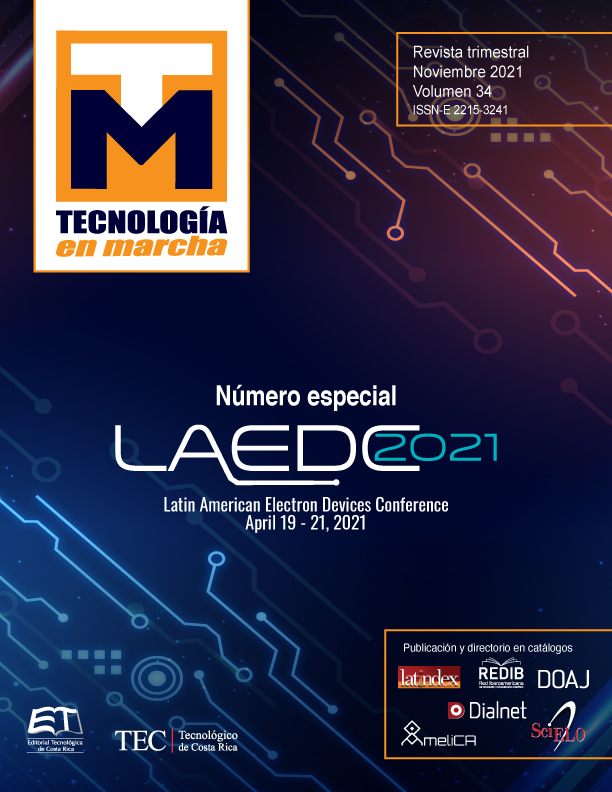STEM education in semi-virtual interactive environment
Main Article Content
Abstract
The Covid-19 pandemic has forced us to change the way we used to handle education in our homes, through sanitary restrictions that seek to prohibit or reduce physical contact, moving from the traditional way to a virtual methodology; reason for which we must look for new solutions to adapt to this new teaching strategy. In addition, the pandemic has accelerated the arrival of the 4.0 revolution or technological revolution, where new challenges arise for society. The above reasons serve to justify and encourage that STEM education cannot stop. However, given the crisis we are experiencing and the solutions provided, the excessive use of virtual environments can affect areas such as psychological, social, etc. Through this project, a learning model implemented through volunteers is proposed, based on an interactive semi-virtual environment, where the participant can interact synchronously with a volunteering model provided by the volunteer tutor, and the learning process is supported through workshops and the use of virtual tools.
Article Details

This work is licensed under a Creative Commons Attribution-NonCommercial-NoDerivatives 4.0 International License.
Los autores conservan los derechos de autor y ceden a la revista el derecho de la primera publicación y pueda editarlo, reproducirlo, distribuirlo, exhibirlo y comunicarlo en el país y en el extranjero mediante medios impresos y electrónicos. Asimismo, asumen el compromiso sobre cualquier litigio o reclamación relacionada con derechos de propiedad intelectual, exonerando de responsabilidad a la Editorial Tecnológica de Costa Rica. Además, se establece que los autores pueden realizar otros acuerdos contractuales independientes y adicionales para la distribución no exclusiva de la versión del artículo publicado en esta revista (p. ej., incluirlo en un repositorio institucional o publicarlo en un libro) siempre que indiquen claramente que el trabajo se publicó por primera vez en esta revista.
References
R.F. Garzozi-Pincay et al, “Ventajas y Desventajas de la relación enseñanza-aprendizaje en la educación virtual,” vol. 7, pp. 59-60, 2021. Online: https://www.terc.mx/index.php/terc/article/view/69/68.
United Nations. The 17 goals. Online: https://sdgs.un.org/es/goals.
Despacho de la Ministra de Educación Pública y Despacho del Ministro de Salud, “Educación Combinada,” Enero 18, 2021.
I. Vizcaíno and D. Cerdas, “MEP implementa clases por televisión para tratar de llegar a más estudiantes,” 2020. Online: https://www.nacion.com/el-pais/educacion/mep-implementa-clases-por-television-paratratar/EYCTR62KIRAH3L7ATPUDL2TDAY/story/#:~:text=El%20Ministerio%20de%20Educaci%C3%B3n%20 P%C3%BAblica,clases%20presenciales%2C%20suspendidas%20desde%20marzo.
D. Cerdas, “Universidades mantendrán clases virtuales aún después de la pandemia,” 2020. Online: https://www.nacion.com/el-pais/educacion/universidades-mantendran-clases-virtuales-aun/ CPHRCSYVJJAY5HCKLEJZ6TZJIU/story/.
D. Cerdas, “91.000 alumnos abandonaron estudios durante pandemia,” 2020. Online at: https://www.nacion. com/el-pais/educacion/91000-alumnos-abandonaron-estudios-durante/YPXXQJKRKBBHRIXKB4IU2KC2XI/ story/#:~:text=Tras%20vacaciones%20de%2015%20d%C3%ADas,pandemia%20de%20la%20 covid%2D19.&text=Seg%C3%BAn%20Cruz%2C%20esa%20cifra%20representa,a%C3%B1o%20en%20 el%20sistema%20educativo.
J. Philpo, “Constructivism: Its Implications for Language Teaching and Second-Language Acquisition,” Papers in Education and Development, vol. 33, (34), 2016. Available: https://journals.udsm.ac.tz/index.php/ ped/article/view/1483.
A. Silva Calpa and D. Germán, “Influencia del Smartphone en los procesos de aprendizaje y enseñanza,” Suma De Negocios, vol. 8, 2017. . DOI: 10.1016/j.sumneg.2017.01.001.
D. Alvarado-Solano and E. Arias-Méndez, “Alfabetización STEAM para las niñas y niños de Centroamérica”. Computación para el Desarrollo: XII Congreso: COMPDES UES 2019.” Computación para el Desarrollo: 114124, (2019).
Arias-Mendez, Esteban, and Danny Xie Li. “IEEE en el TEC Contribuyendo con el avance de la ciencia y la tecnología para el beneficio de la humanidad: Sea voluntario, una forma de cambiar el mundo.” Investiga. TEC 1, no. 40 (2021).
M. L. Vecina Jiménez, F. Chacón Fuertes, y M. J. Sueiro Abad, «Satisfacción en el voluntariado: estructura interna y relación con la permanencia en las organizaciones», PST, vol. 21, n.º Número 1, pp. 112-117, dic. 2009.
M. A. E. Valdés, “Motivación y Neurociencia: Algunas implicaciones educativas,” vol. 20, no. 1, pp. 104–109, 2011.

